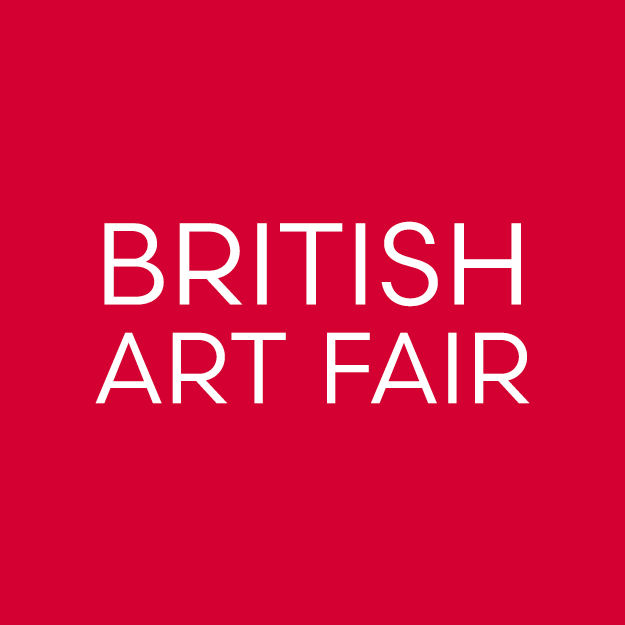Threads of Change
Textile art is as old as the hills, but retains its vitality in the digital age.
It would be tempting to view the current vogue for textile art as a knee-jerk reaction against digitalism and AI art by collectors and gatekeepers, always on the look-out for the next new thing. Or old thing, in this case (as Bauhaus artist Anni Albers pointed out in her seminal 1965 book On Weaving, ‘Along with cave paintings, threads were among the earliest transmitters of meaning.’)
But let’s not go there: it would be more accurate to call this resurgence a conversation with computer-generated art. Obvious differences aside (you can’t smell a digital print; there’s a tactility about textiles that AI art can’t yet match) there are many interesting parallels, similarities and crossovers to consider.
After all, early computers used punch cards based on Joseph Jacquard’s revolutionary ‘Jacquard Loom’, invented in 1801. There’s something very binary about weft and warp; think about all the pattern, and repetition involved in the weaving process. And did you know that the Apollo 11 moon landing engineers employed Navaho textile artists to design the integrated circuit boards for their spacecraft?
Margo Selby, Moon Landing , 2024, British wool for the weft yarn along with fine silk threads, 16m. Credit Cristina Schek, Courtesy Cynthia Corbett Gallery. Copyright the Artist.
I learnt that last nugget from Margo Selby, whose colourful woven artworks were displayed at last year’s British Art Fair by Cynthia Corbett Gallery. Selby was also shown at 2024’s Collect Craft Fair, her sixteen-metre-high tapestry Moon Landing running up the circular stairwell in Somerset House. The piece, inspired by those Navaho weavers’ work, was fashioned in collaboration with composer Helen Caddick, the complex patterns of the fabric responding to the equally complex patterns in the musical score (played on-site by a string sextet).
Dovecot Studios after Wilhelmina Barns-Graham, Glacier Ice Face, 2024, Wool, cotton and linen on cotton warp, 180 x 99 cm. Woven by Louise Trotter, Ben Hymers, and Elaine Wilson.
Selby wasn’t the only textile artist to be featured at last year’s British Art Fair. One of the highlights of the show – in this reviewer’s eyes at least – was the tapestry reworking of Wilhelmina Barns-Graham’s 1951 painting Glacier Ice Face, in the second-floor exhibition on the Scottish Modernist. This two-metre-high vertical piece, unveiled in February 2024, was fashioned at the Dovecot Studios in Edinburgh, an important UK hub for textile art, which has worked with prominent artists such as Henry Moore, David Hockney, Sir Peter Blake and Eduardo Paolozzi. Other 20th-century Modernist and contemporaries who have experimented with textile design include John Piper, Graham Sutherland, Gillian Ayres, Tracey Emin, Yinka Shonibare and Chris Ofili.
Emma Mason, who showed a selection of mid-century screenprints at British Art Fair 2024, is currently involved in a retrospective exhibition of one of the most influential UK-based textile artists of the twentieth-century, Tadek Beutlich. Mason holds the late Polish-born artist’s archive, and has lent a significant collection of pieces to Ditchling Museum of Art + Craft’s current show (until June 22) Tadek Beutlich: On and Off the Loom. If you still need to be persuaded that textile art can be a vibrant, cutting-edge fine-art form, and not just a ‘craft’, I urge that you pay a visit. Beutlich’s colourful work – much of it produced in the studio in Ditchling he ran in the 1960s and 70s – involved unique weaving techniques that allowed for freedom and abstraction in his designs; his innovative use of materials saw him incorporate sisal, hemp, raffia, bark and even X-Ray film into his work. He was hugely influential in his time, and his avant-garde legacy continues to inform contemporary textile artists. Mason is currently selling examples of Beutlich’s work at very competitive prices from her Eastbourne gallery.
Installation view: Tadek Beutlich: On and Off the Loom
If you’re quick you’ll catch another exhibition in Sussex (Grayson Perry: A Temple for Everyone, until March 9th) which includes two textile pieces by the exuberant artist, from his 2015 Essex House Tapestries series, following the fortunes of fictional character Julie Cope. These extraordinary pieces demonstrate how textiles can achieve effects not possible in paint – the rumples of a coat, the wrinkles in a face – and were the fruit of many hours of intense labour, including four to six weeks drawing the images onto a computer.
Grayson Perry’s work is beyond most pockets, but textile art remains remarkably affordable when compared with work by similar-level painters or sculptors. Contemporary British artists to look out for include Katherine Swailes, Caron Penney, Jonathan Baldock, Louise Baldwin and Bethan Ash. And then there’s Alice Kettle (represented until recently by Candida Stevens, as well as Zulieka Gallery, both British Art Fair regulars) whose textile works regularly employ a combination of stitch techniques, both analogue and digital, bringing together the use of antique machines and contemporary digitised methodologies. A 2020 exhibition of her work at Saïd Business School, University of Oxford was titled Threads of Change, which I have nicked for the title of this piece. It’s apt, after all: contemporary textile art is a vibrant, happening, often wildly experimental scene.
Cecilie Waagner Falkenstrøm, "I see it, so you don't have to", 2023, Cotton and viscose wall hanging produced on Jacquard loom created with generative artificial intelligence technology (machine learning, diffusion).
To tie up my argument, I need only cite the caption of a work in the Pivotal: Digitalism exhibition at British Art Fair last year, by Cecilie Waagner Falkenstrøm, who specializes in creating tech-art that provokes reflections about human engagement with technology: “I see it, so you don't have to", 2023, Cotton and viscose wall hanging produced on Jacquard loom created with generative artificial intelligence technology (machine learning, diffusion).’ That conversation between digital and textile art is getting very interesting indeed.




